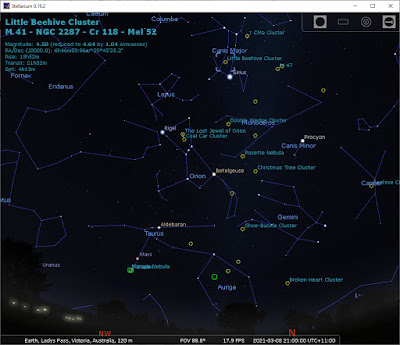Clouds over Omicron Velorum

High clouds! I've been taking photos of star clusters for a while now. I've been trying to demonstrate how much people with small telescopes in the city should be able to see. This one didn't go so well. Clusters are not only pretty, and most don't need lots of magnification. They're also largely immune from the city's light pollution. So I went out a week or two back to the dark sky site with my largely autonomous equipment all programmed to take photos of five different clusters. I set up, polar aligned, sorted out the inevitable technical problem that cropped up (urghh) and then got started on the first of the five targets. The night was pretty good, with the Moon setting in the west and not being too much of a problem (remember star clusters aren't badly affected by stray light). The first two images went without a hitch, and so I decided to leave the telescope doing what it was programmed to and I retired to my tent. ...






